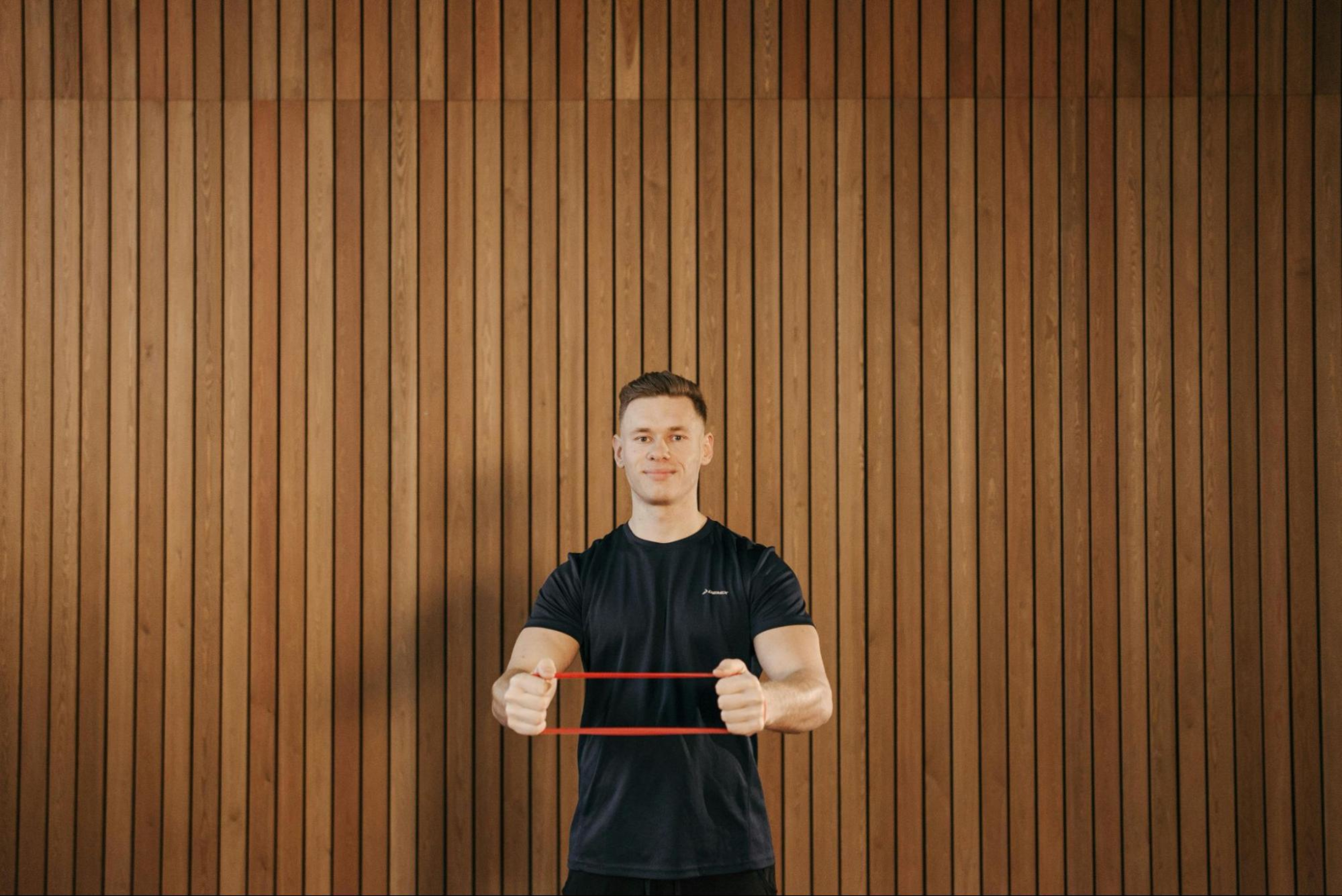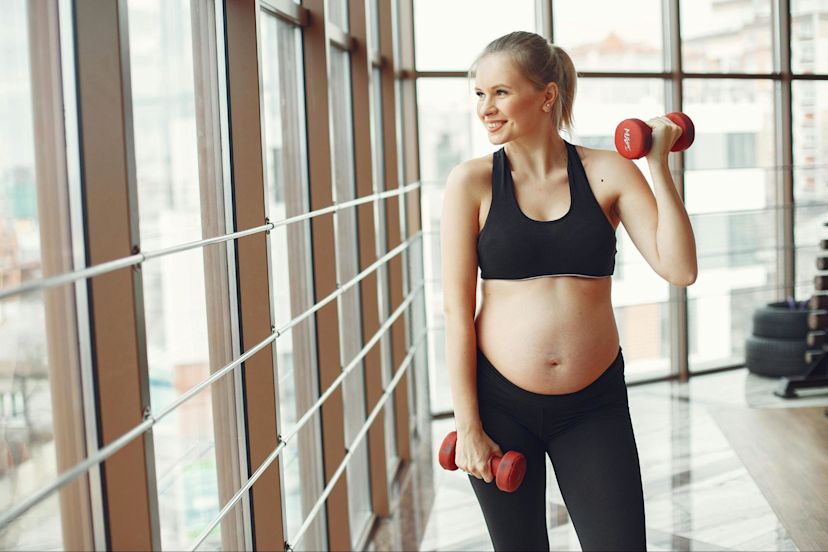Do Resistance Bands Build Muscle?
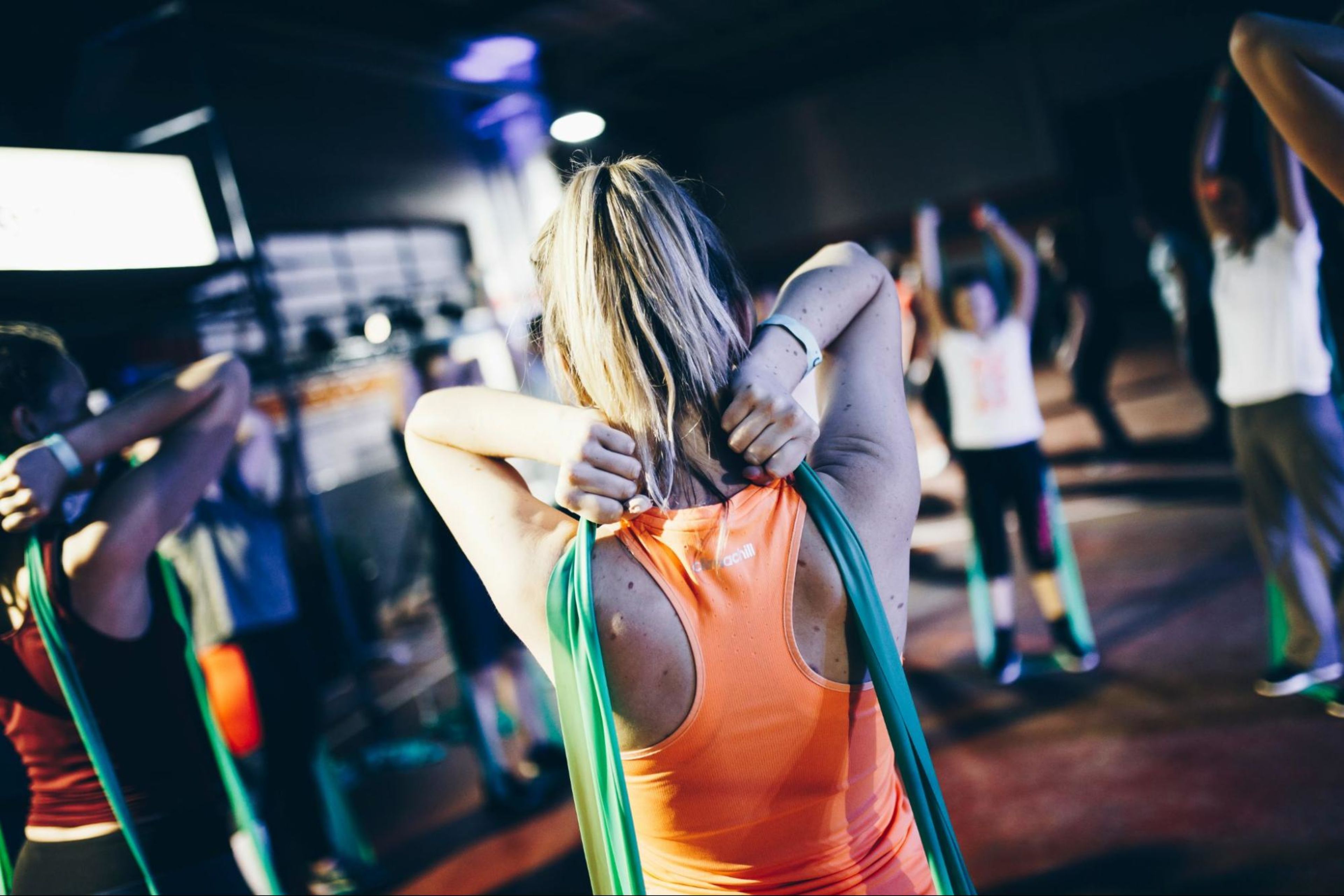
If you’ve ever been skeptical about whether resistance bands can actually build muscle—especially in comparison to using free weights like dumbbells and kettlebells—you’re not alone. Many fitness enthusiasts associate muscle growth with lifting heavy weights or using machines at the gym, but resistance bands actually offer a compelling alternative.
While traditional strength training methods like free weights and machines provide well-documented benefits, resistance bands can also contribute significantly to muscle development when used correctly. In this article, we’ll explore how muscle growth works and how to effectively use resistance bands to build muscle, covering:
Let’s get started!
The science behind muscle growth with resistance bands
Muscle growth, or hypertrophy, happens when muscle fibers experience stress and microtears from resistance training. Your body then repairs and strengthens these fibers, leading to increased muscle mass over time. In order to continue to see progress, this process requires progressive overload—continually increasing resistance to challenge your muscles. Additionally, your body will need to recover after each session through rest and proper nutrition.
Traditionally, weightlifting has been accepted as the optimal approach to achieving these results, but resistance bands can stimulate muscle growth in a similar way.
Are resistance bands effective for building muscle?
Yes! Resistance bands provide something that free weights do not: continuous tension throughout the entire range of motion. This phenomenon activates stabilizing muscles, which are often overlooked by free weights and machines. As a result, bands can produce similar levels of muscle activation as traditional weight training. Resistance bands also allow for variable resistance—meaning the tension increases as the band stretches—helping to impact more muscle fibers during the exercise.
Furthermore, resistance bands can be particularly effective for those recovering from injuries, working out at home, or looking to add variety to their strength training routines. When used with proper intensity, volume, and progression, resistance bands can support substantial muscle gain.
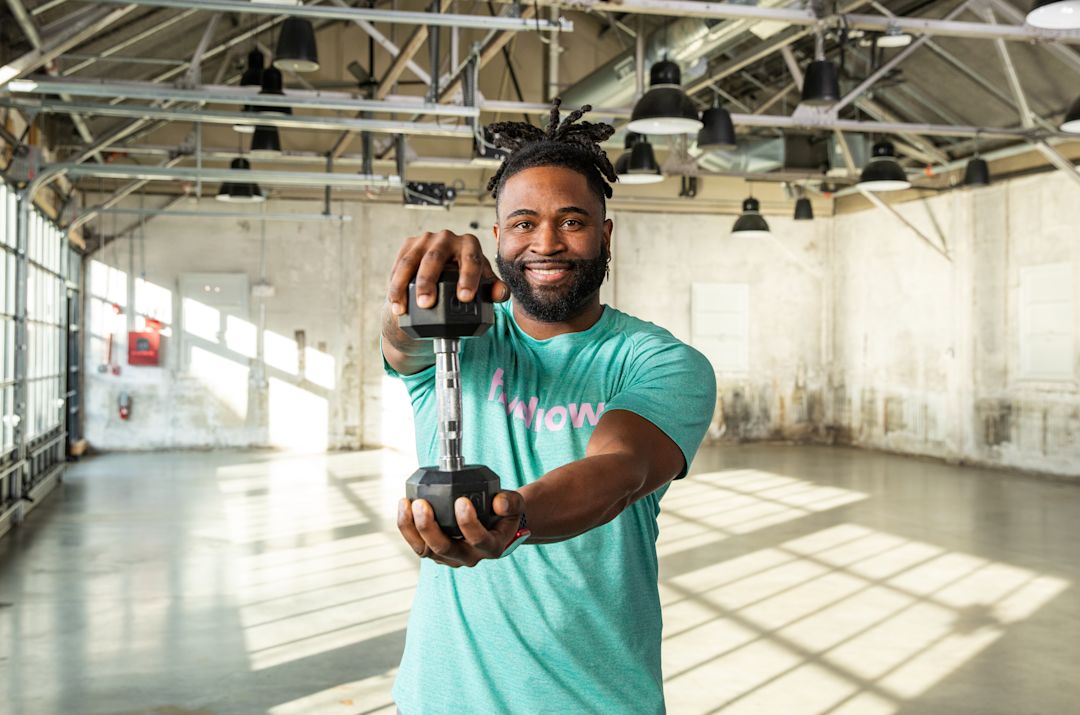
Explore Hydrow's library of strength training workouts.
How to use resistance bands for maximum muscle growth
To maximize muscle growth with resistance bands, follow these key principles:
Progressive overload
Controlled movements
Time under tension
Full range of motion
Variety in exercise
1. Progressive overload
Gradually increase resistance over time by using heavier bands or increasing reps and sets. You can also integrate resistance bands with barbells or other free weights to add additional resistance to those exercises for maximum results.
2. Controlled movements
Just like with traditional free weights, you should avoid relying on momentum to complete an exercise, as it doesn’t challenge your muscles. Instead, focus on slow, controlled reps to maximize muscle engagement. Perform as many reps as you can until your muscles are fatigued.

Explore Hydrow’s library of 5,000+ rowing, circuit training, yoga, Pilates, and mobility workouts.
3. Time under tension
Another way to optimize your resistance bands is to increase the duration of each rep by slowing down the lowering phase. This motion provides additional resistance to your muscles on the eccentric phase and can enhance muscle hypertrophy.
4. Full range of motion
In order to reap all the benefits of your bands, be sure to ensure a complete stretch and contraction during each rep. Your muscles require resistance through a full range of motion in order to be activated and challenged.
5. Variety in exercises
Since resistance bands are so versatile, it’s important to target different muscle groups each time you exercise. Try different movement patterns to promote a balanced development of muscles across your body.
The best resistance band exercises for muscle growth
There are so many ways you can incorporate resistance bands into your workout routine. We’ve selected some of our favorite exercises for each muscle group:
1. Upper-body resistance band workouts
Resistance bands are a great way to challenge your upper body, which includes your chest, back, arms, and shoulders. Check out some of the following exercises:
Banded push-up: Loop a band around your back and under your hands to add resistance to a push-up.
Overhead shoulder press: Stand on the band and press overhead to target shoulders.
Bicep curls: Step on the bands and curl the handles up, keeping elbows stationary.
Tricep extensions: Anchor the band above your head and extend your arms downward.
Lat pulldowns: Secure the band overhead and pull down to your sides to engage your lats.
2. Lower-body resistance band workouts
You can also use bands to target muscles in your lower body, including your calves, hamstrings, quads, glutes, and hip flexors. Here are a few of our favorites:
Squats: Stand on the band and hold it at shoulder height to add resistance.
Deadlifts: Step on the band and hinge at your hips to mimic a traditional deadlift.
Lunges: Place the band under your front foot and hold the handles at your shoulders while you lunge forward. Repeat on the other leg.
Glute bridges: Loop a band around your thighs and drive your hips up to engage your glutes.
Leg presses: Anchor the band to a stable object and press against it with your foot. Alternate for each side.

Explore Hydrow's library of strength training workouts.
3. Core resistance band workouts
Resistance bands are a great way to engage your core muscles. Check out these core exercises using bands:
Russian twists: Hold a loop band in both hands and twist from side to side while creating tension in the band.
Standing wood chops: Anchor the band and pull diagonally across your body.
Seated ab twists: Sit with your legs lifted and twist the band side to side.
Bicycle crunches: Lie on your back and loop the band around your feet, performing a traditional bicycle crunch with extra tension.
4. Full-body resistance band workouts
For some killer full-body resistance band exercises, check out the following list:
Thrusters: Squat while holding the band at shoulder height. Then press overhead as you jump up.
Burpees: Step on the band and add resistance to your jumps by holding the ends in your hands.
Seated rows: Anchor the band around your feet and perform rows while seated.
Pull-ups: Use a band for assistance when performing pull-ups by anchoring it around the bar and stepping on the looped end.
How resistance bands compare to other strength training equipment
Resistance bands can replace or complement other strength training equipment by offering a host of benefits. In comparison to free weights, both activate muscles effectively, but resistance bands will provide continuous tension throughout the movement. Moreover, bands are more portable as they don’t weigh as much as free weights and require less space. Finally, bands provide a lower-impact alternative, reducing strain on joints, making them a great choice for those with mobility issues or recovering from an injury.
In comparison to weight machines typically found in gyms, resistance bands offer a number of advantages. First, while machines can guide movement patterns, bands allow for a greater range of natural motion. Additionally, resistance bands engage stabilizing muscles while machines are not designed to do so. Lastly, unless you have a gym membership, bands are far more cost-effective and can be used anywhere, especially while you travel.
Hop on the bandwagon!
Resistance bands are an excellent exercise tool when used properly. By applying progressive overload, maintaining proper form, and incorporating a variety of exercises, you can achieve significant muscle growth with resistance bands alone or alongside traditional strength training.
Looking for a great set of resistance bands to get you started? Hydrow’s Multi-Resistance Band Kit offers two short resistance bands, two long resistance bands, and three resistance bands with different levels of resistance so you can tailor your workout to your fitness level and goals. Learn more about our resistance bands today!
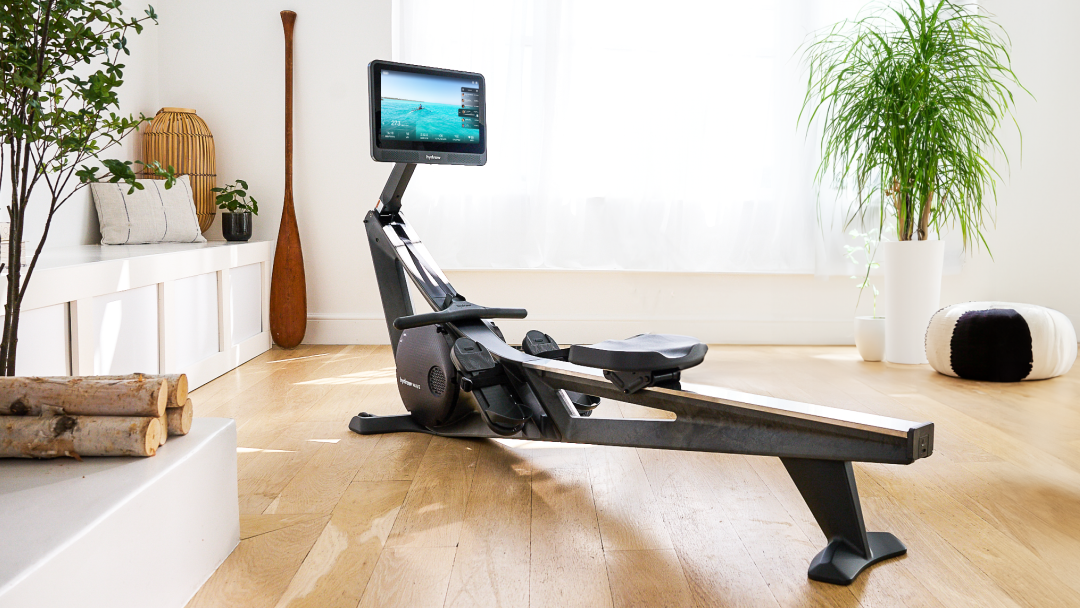
Real strength keeps moving
Learn how working out with Hydrow can help support a fuller, more active life.




